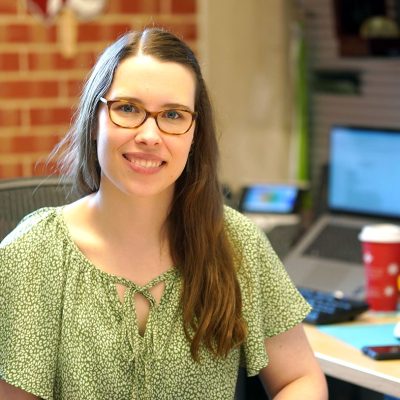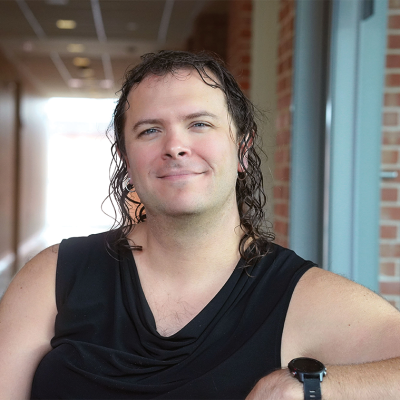
Dr. Emma Treadway: Where Human Meets Machine
Dr. Emma Treadway explores how humans experience touch, movement, and even emotion at the intersection of:
- Haptics and human perception
- Physical human-robot interaction
- Control systems
- Affect and engineering identity
Her work blends rigorous mechanical engineering with deep curiosity about how people engage with technology — and with the process of learning engineering.
Feeling the Force
In her 2024 paper in IEEE Transactions on Haptics, Dr. Treadway and her team investigated how virtual damping affects people’s ability to distinguish stiffness in virtual environments. Their findings have big implications for how haptic interfaces are designed in robotics, medicine, and education.
Exercising in Space
What happens to the body in microgravity? Dr. Treadway co-designed soft pneumatic exoskeletons that provide resistance without heavy machines — a potential solution for astronaut health and rehabilitation robotics on Earth.
Engineering Identity & Emotion
Funded by the National Science Foundation, this two-year study asks: “How do emotions and values shape engineering identity — especially for women and students from underrepresented groups?” Her team tracks student experiences in and out of the major, asking not just who becomes an engineer, but why — and how that identity evolves.
Feeling Like an Engineer
What does it mean to feel like an engineer? According to Dr. Treadway, it’s not a straightforward question. Her team’s research shows that students hold a range of beliefs about what it means to be an engineer — beliefs that shape how they see themselves and their education.
Many associate the feeling with problem-solving, applying math and science to real-world or societal problems, building or fixing things, or overcoming challenges. These moments often happen during design projects or labs, especially when students struggle to get something to work or refine a solution.
Affiliation: Department of Engineering Science
Research Links: tinyurl.com/EmmaTreadway

Dr. Brian Teague: Reprogramming Life with Yeast
Dr. Teague’s lab uses Saccharomyces cerevisiae (brewer’s yeast) to investigate how biological systems behave, evolve, and can be reprogrammed. Their work explores both the fundamentals of life and how biology can be applied to solve real-world problems.
Cheese Whey to Ethanol
Wisconsin makes a lot of cheese — and a lot of cheese whey gets dumped into waterways. Dr. Teague’s team is engineering yeast to ferment the lactose in whey into ethanol, creating a cleaner, more sustainable fuel source from agricultural waste.
Programmed Cell Death in Yeast?
Apoptosis is typically associated with complex organisms — so why do yeast do it too?
“Maybe it’s evolutionary altruism. Maybe not. But studying it could help us better understand human biology.”
Synthetic Morphogenesis
What if we could program living cells to grow into specific patterns or shapes? Dr. Teague’s work in synthetic morphogenesis explores genetically encoded pattern formation — a step toward designing multicellular systems from the ground up.
Flow Cytometry Software
Frustrated by clunky flow cytometry tools, Dr. Teague built their own: Cytoflow — an open-source, Python-powered platform for analyzing complex cytometry data with elegance, reproducibility, and actual decent plots.
Equity in Science
Beyond the lab bench and the petri dish, Dr. Teague is committed to building a more inclusive scientific community — one where students of all identities are empowered to bring their full selves to the work. They actively work to make science more welcoming for those historically excluded from it — challenging norms that have privileged white, able-bodied, middle- and upper-class men for too long. Their lab culture is one of care, representation, and the belief that science is better when it reflects everyone.
Affiliation: Department of Biology – Synthetic Biology & Systems Design
Research Website: teague.bio